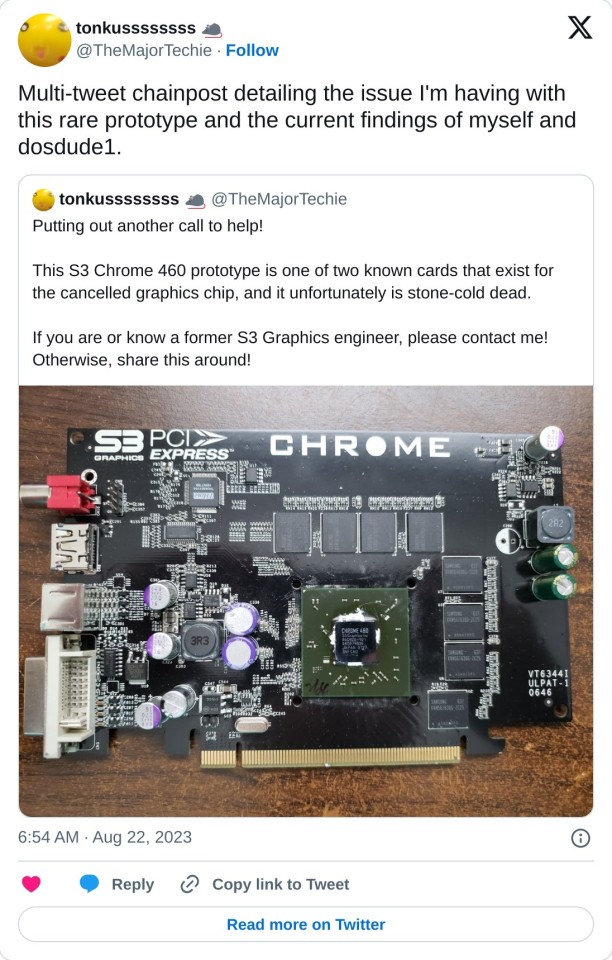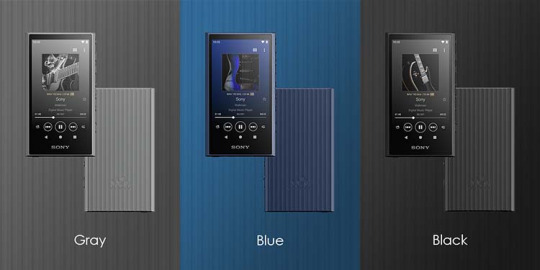#techblogs tech technology
Explore tagged Tumblr posts
Text

Embark on a thrilling journey with TechHubExplorer, where we delve deep into the world of innovation, uncovering the latest tech trends and untold digital stories. Our goal is simple: to be your trusted companion as you navigate the ever-changing landscape of technology.
But wait, we're not your average tech blog! We're your friendly guides to all things tech – from the coolest gadgets to the hottest trends and beyond.
What makes us stand out?
In-Depth Exploration: We go beyond the surface, offering comprehensive insights and analyses into the core of technological advancements.
Curated Excellence: Our content is more than just information; it's a carefully curated experience. We sift through the noise to bring you only the best.
Join us as we unravel tomorrow's tech today! TechHubExplorer isn't just a website; it's a vibrant community. Whether you're a tech expert or a curious newcomer, there's a place for you in our ever-growing digital family. Let's explore the limitless possibilities together.
2 notes
·
View notes
Text

L'intelligence artificielle ne cesse de repousser les limites du web design ! 🚀
Plongez dans notre guide complet sur la personnalisation dynamique de l'UX grâce à l'IA. Transformez l'expérience de vos visiteurs et boostez vos conversions avec des techniques innovantes.
→ Personnalisation en temps réel → Analyse comportementale → Conversion optimisée → Solutions intelligentes
Découvrez comment votre site web peut devenir plus intelligent ! 🤖✨
#ux#webdesign#ai#artificialintelligence#uxdesign#webdev#userexperience#digital#tech#design#technology#future#webdevelopment#coding#development#designer#techblog#websitedesign#digitaldesign#innovation#creativecoding#designthinking#uxinsights#techtrends#futureweb#aitech#modernweb#digitalinnovation#interactivedesign
0 notes
Text
#technology#techblog#blog#customer experience#customer experience consulting company#digital transformation#customer experience transformation company#cx#ai#ai strategy#ai consulting#ai consulting company#techology#trends#tech news#tech#digital transformation consulting company#digital strategy#digital transformation consulting#digital transformation company#successive.tech#successive digital
0 notes
Text
Xvif - Meaning, Features & Advantages (2024)

Revealing XVIF: XML Validation Interoperability Framework
📖To read more visit here🌐🔗: https://onewebinc.com/xvif/
#technology#tech#innovation#technews#newtechnology#techlife#techblog#techupdate#techworld#techlovers#xml#xmlvalidation#datavalidation#dataintegrity#dataquality#interoperability#framework#softwaredevelopment#softwareengineering#java#python#cloudcomputing
0 notes
Text
This is a tech blog. Here you can read about gadgets such as laptops smartphones bluetooth speakers, gaming and accessories. This technology also cover wide range of topics around technology.
0 notes
Text
Revolutionizing Savings: The Hidden Tech Gem
#techsavvy #techsavings #savebig
In the ever-evolving landscape of technology, there’s a hidden gem that not only enhances our daily lives but also puts money back in our pockets. Let’s explore a lesser-known yet impactful technology that has quietly become a game-changer for those seeking to save money without compromising on efficiency and convenience. 1. Smart Thermostats for Energy Savings: Photo by Erik Mclean on…

View On WordPress
0 notes
Text
How To Install Kali Linux in Termux
Learn how to install Kali Linux in Termux and transform your Android device into a powerhouse for ethical hacking and cybersecurity exploration. Follow our step-by-step guide and embark on a journey to enhance your tech skills responsibly. 🛡️📱 #KaliLinuxInTermux #EthicalHacking #Cybersecurity
0 notes
Text
Please signal boost: One-of-a-kind Broken Prototype S3 Chrome 460 Mega-infopost


(Yes, I know that is a very word salad-y post title.)
This is the S3 Chrome 460. It is currently nonworking. Nobody knows anything about it, and I’m trying to get in contact with any former S3 Graphics engineers that may be able to help.
What is known:
All “@” handles are in reference to users on Twitter.
As a whole, the Chrome 400 series utilized the Destination architecture, which was S3’s very first unified shader architecture capable of GPGPU tasks, much like Nvidia’s CUDA.
The Chrome 450/460 series utilized the mid-range “Destination 2” (D2) architecture, as opposed to “Destination 3” used by the low-end 430/440. As said by Loeschzwerg, there were no known high-end “Destination 1” architecture chip taped out. (https://twitter.com/Loeschzwerg_3DC/status/1683162950951903235)
The Chrome 450/460 was a 13x13mm (169mm2) die produced on the 90nm node by Fujitsu, and later TSMC. Strangely, the 430/440 series was produced on the much smaller 65nm node.
The Chrome 450/460 supported DX10, whereas the 430/440 supported DX10.1
The PCI device IDs for the Chrome 450/460 series are as follows:
o 9020, 9022, 9023, 9024, 9025 (http://listing.driveragent.com/c/pci/5333)
o The vendor ID for all chips is 5333 (S3 Graphics)
o There is one known beta driver that supports these device IDs (https://www.touslesdrivers.com/index.php?v_page=23&v_code=21175)
These PCI IDs appear to correspond to different die revisions
o Known existing die revisions present in collection: 86C920-921 (ID 9020), 86C922 (ID 9022 based on the cards owned by @Loeschzwerg_3DC), and 86C924 (can be assumed to be device ID 9024)
There are two “major” die revisions that exist.
o Revision 86C920-921 (I will refer to this as the “’920” revision) is most certainly the earliest revision, being physically larger in package size than all other revisions.
It also has a different pinout, and is produced by Fujitsu rather than TSMC, resulting in a greyish tint on the die rather than the blue tint of later revision chips.
The date code on all 86C920 chips (in my collection) reads “0727”, which implies that every ‘920 chip in existence was produced in a single batch on the 27th week of 2007, but cannot concretely prove so.
o Revision 86C922 (‘922) changes fabs from Fujitsu to TSMC, leaving the dies with a blueish tint and changing the pinout. This revision serves as the basis for all following revisions known to exist.
The date code on all 86C922 chips across my collection and Loeschzwerg’s appears to be 0738, implying that this revision was also produced in a single run much like its predecessor. (https://twitter.com/Loeschzwerg_3DC/status/1616750453500547072)
The 86C924 (‘924) revision is minor in comparison to the jump from ‘920 to ‘922, but interestingly the two in my collection have mismatching date codes—0728 and 0734. Unless I am reading the date codes wrong, this means that the ‘924 revision was produced either in two separate batches before the ‘922 run was done, or that perhaps it was continuously produced between the ‘920 and ‘922 revisions. I do not know what changes were made between ‘922 and ‘924.
o Almost all dies have a number and a letter, a word, or both written on them in permanent marker, likely for IDing which ones were being tested for what. The two words that appear the most often are “mem” (by far the most common) and “shift”. The letter “p” (pass?) also regularly appears.
There are three known Chrome 460 ES cards that exist: my broken early-revision ‘920 card, and Loeschzwerg’s two later-revision cards, one of which appears to be a 460 binned down to a 450.
There were rumors that the reason why the card was scrapped seemingly just before release was because its die became too expensive to produce (https://forum.beyond3d.com/threads/s3-excalibur-with-128-bit-mc-taped-out.42965/). There is zero confirmation or denial of this, and this rumor was said in passing on a thread discussing the follow-up Chrome 500 series (Excalibur architecture, which was later revealed to be a mildly tweaked at best Destination architecture).
The Chrome 460 (or at least, its ‘920 revision) gets hot very quickly, and may have been the reason for the switch to TSMC’s fabs.
o I believe that my card, despite having a heatsink and a fan blowing directly at it, likely died from overheating in the few minutes that it was running while I was collecting information and attempting to install an INF-modded 430/440 driver. It worked again after replacing the popped MOSFET and putting on the proper stock heatsink that it would’ve had mounted, but quickly died to a short a second time even with the new cooler. I still feel bad about this.
Most if not all Chrome 460 chips were acquired either directly through the S3/VIA/Centaur lab auction or through someone who attended the auction. The chips and card I own came from John at CPUShack, for example, and a number of others purchased miscellaneous 460s for their private collections from him.
o Loeschzwerg got his cards from a reseller who attended the 2021 Centaur auction just like I had.
And now, returning to my own broken card, to reiterate:
The card died to a short, and triggers the power supply’s OCP mode when the chip is installed on the board according to @dosdude1 . This does not happen when the chip is removed.
VCORE and GND were found by dosdude1 on the card’s footprint of the Chrome 460, and using that knowledge, the resistance from VCORE to GND on the chip itself was found:
o The original chip that was soldered to the card itself measured 1.5 ohms from VCORE to GND
o All other ‘920 chips between the ones in my collection and sent to dosdude1 as candidates for chip-swapping measure between 0.5 and 0.9 ohms, which I was told should be normal for graphics chips, but according to dosdude1 is still plenty low enough to trip the PSU’s OCP mode when installed.
Timeline
I originally purchased the card, alongside two “spare” ‘920 chips, two ‘922 chips, and two ‘924 chips, from CPUShack. The card had no heatsink included, so I had to make do with a chipset cooler (that honestly might have actually been better at cooling than the stock cooler) and a case fan.
o A few weeks after the purchase and arrival of the card, which by then had blown out its MOSFET and died short, I was able to buy a couple S3 Chrome 400-series coolers from CPUShack after he found them. Installing the cooler and replacing the MOSFET with an identical one salvaged off a Chrome 430 managed to get the card to work again for about half a minute from what I remember. However, I will also mention that the salvaged MOSFET came off a Chrome 430 that also died short. The MOSFET itself was undamaged, but the die itself appeared to be busted. I guess it was just an S3 thing during this generation.
o From what I remember, I filled out repair forms for both Louis Rossman and NorthRidgeFix, in hopes that a chip swap with one of the extra ‘920 dies I’d acquired at the time could bring the card back to life. In both cases I was turned down, though this was to be expected since there is zero documentation available for either the card or the chip itself.
o I was then able to get in contact with dosdude1, asking the same thing—just a chip swap was what I was hoping needed to be done. After some back and forth, I sent off the card, both of the extra ‘920 chips I had at the time, and some additional VRM MOSFETs that I’d bought after I’d run out of salvage chips.
o Shortly after the card and chips were mailed out, I came back to CPUShack asking if he had anymore Chrome 460 dies in stock. I proceeded to purchase all remaining chips he could find, which consisted of 10 ‘920 and 10 ‘922 revision dies.
o The chip swap would be completed with minimal issue, but the card unfortunately remained dead. It’s at this point where dosdude1 decided to probe for VCORE and GND, and in turn I measured out the resistance between the two on all ten of the ‘920 chips that had arrived by then, finding that they all read between 0.5 and 0.9 ohms. I do not know what the resistance from VCORE to GND is on the later die revisions, as the pinout was changed.
o Currently, dosdude1 is waiting for a buck regulator replacement to arrive after replacing the MOSFETs themselves yet again, finding in the process that the replacement MOSFETs I sent were faulty and… sending 12 volts straight into VCORE. That’s on me for buying them off Ebay. I did not know where else to look.
o Despite this, even after the faulty MOSFETs were replaced with tested working ones, the card continued to pull far too much current.
o Finally, as of now, he is still waiting for the buck regulator to arrive. There is no evidence that it is faulty as opposed to the MOSFETs, but neither of us have any clue what could be wrong anymore at this point aside from the dies themselves. It’s very much possible that one of the three dies in his possession have been fried to a crisp by that momentary 12v to VCORE in the split second before OCP kicked in, but even then after a non-faulty replacement was installed alongside a spare die it continues to trip the power supply’s OCP.
o I own 27 Chrome 460 dies across three revisions, 13 of which, counting the two sent to dosdude1 and the one installed on the card itself, are of the ‘920 revision that’s been causing myself and dosdude1 headaches for the better part of a year. Neither of us know what is wrong with the card, and outside of the discovery of the faulty “new” MOSFETs I’d sent, the only thing that appears to still be the issue are the dies themselves. They can’t all be bad, right?
Misc. info
My only lead on anyone that may be familiar with the S3 Chrome 460 is Bruce Chang of VIA Technologies. However, his email appears to only accept messages from others in the company.
Additional Photos












#not radioshack#techblog#youtube#my posts#S3 Chrome#S3 Chrome 460#prototype#prototype hardware#technology#prototype technology#graphics card#unreleased technology#tech blog#call for help#please signal boost
1 note
·
View note
Text
Reblogging this once again! I really hope that someday I can get this card working again before it fades into obscurity as little more than a footnote. If you were or know a former S3 Graphics engineer that's familiar with this card, or really anything from S3 Graphics' Chrome 400 series, let me know!
To my knowledge, this card and one other (also nonfunctional) card owned by Loeschzwerg from Germany (link here, I haven't seen any sort of update post or follow-up detailing repair or current working state) are the only two S3 Chrome 460 cards known to exist.
Three Chrome 460 (one apparently maybe being a Chrome 460 binned down to a 450) cards are known to exist. Loeschzwerg on Twitter demonstrates that his two cards work, though they are much later revisions in comparison to my card.
Even if you don't know anyone or anything about this, please, share this around as far as you can! This is a piece of tech history hailing from the tail end of a dying company, and I'd hate to see it remain a paperweight for the rest of time.
So. To reiterate.
I need your help. Whether it's direct advice if you happen to know a thing or two about this card, or indirect--or even just a name-drop of someone or another that worked at S3 Graphics in the mid to late 2000s. Anything helps.
Tweet chain with additional info on the specific problem I'm having. I'll come back and add the details from there to this post as well later it's 1 am.

A call to help on repairing a one-of-a-kind prototype!
youtube
#signal boost#please reblog#tech history#technology#prototype#s3 graphics#yes i already tried posting on twitter but my reach there is even smaller than here on tumblr#at the very least even a list of names of people familiar with the card is fine by me#techblog#chrome 460#s3 chrome 460#my posts
2 notes
·
View notes
Text
How Ai-Writer Helps Bloggers Generate Consistent, High-Quality Content

Blogging requires a consistent stream of high-quality content to attract readers and maintain engagement. However, creating well-researched blog posts regularly can be time-consuming. Ai-Writer provides a solution by automating the writing process, allowing bloggers to generate informative content effortlessly.#Blogging #AiWriter #ContentCreation #AIWriting #SEOContent #DigitalMarketing #TravelBlogs #FoodBlogs #TechBlogs #ContentStrategy
Problem Statement: Creating blog content that is both informative and engaging requires significant time and effort. Bloggers often struggle to maintain a consistent posting schedule due to the time needed for research, writing, and editing.
Application: Ai-Writer allows bloggers to generate complete blog posts by simply entering a topic or a few keywords. For instance, a travel blogger can input "best destinations in Europe" and receive a well-structured article outlining top travel spots, complete with descriptions and recommendations. The platform’s SEO optimization features ensure that the content is search-engine friendly, helping bloggers reach a wider audience.
Outcome: By using Ai-Writer, bloggers can maintain a consistent posting schedule without sacrificing quality. The AI-generated content allows bloggers to focus more on engaging with their audience and promoting their blogs, ultimately growing their readership.
Industry Examples:
Travel Bloggers: Create detailed destination guides and travel tips effortlessly, helping maintain a steady flow of content for readers.
Food Bloggers: Generate recipes, cooking tips, and restaurant reviews without spending hours on research and writing.
Tech Bloggers: Produce product reviews and technology news articles that are well-researched and SEO-optimized, keeping readers informed and engaged.
Additional Scenarios: Ai-Writer can also be used by marketing teams to create content for campaigns, by small businesses for website copy, and by educators to generate informative articles for students.
Discover how Ai-Writer can help you create high-quality blog content consistently and grow your audience.
Get started today at aiwikiweb.com/product/ai-writer/
#Blogging#AiWriter#ContentCreation#AIWriting#SEOContent#DigitalMarketing#TravelBlogs#FoodBlogs#TechBlogs#ContentStrategy
0 notes
Text
Explore the Top Tech Trends That Will Amaze You. Stay Ahead of the Game. Stay Informed with the Latest Tech Trends. Get Ready to Be Wowed!

1 note
·
View note
Text

#frutiger#frutiger aero#frutiger metro#tech#retro tech#techbuzz#techblog#techno#vintage tech#90s#2000s#y2k#cyber#cyber core#digicore#digital#alt#futuristic#technology#aesthe#aesthetic#aesthetics
389 notes
·
View notes
Text
Entry 1: Catch up
For the past two weeks I've been learning Python and I've been really enjoying it. I've completed the Learn Python 3 course on Codecademy and have been using various Youtube tutorials, as of right now I can confidently work with:
Basic syntax
Boolean operators
If, elif, else statements
while and for loops
Lists, tuples, and dictionaries
Functions
Modules
Files
Technically, classes should be on this list but it makes no sense and I hate it...
#no amount of tutorials will make classes make sense#Codeblr#programmer#coding#programming#programmer life#100 days of code#100daysofcode#coder#coderlife#code#c++ language#c++#gamedev#game development#developer#designer#tech#techblog#technology#tech blog#programmersoftumber#programmer problems#codecademy#studyspo#python
49 notes
·
View notes
Text
Music Player in 2023... Why Sony?
The convenience of Bluetooth streaming is great but it is constrained by how much data it can pump through its signal. Though portable music players are preferably used with wired headphones for maximal performance, wired cans have seemingly enjoyed a recent renaissance too.


Smartphones are great for convenience but they’re not necessarily great for sound. As they’re multi-taskers, able to perform a range of functions, that also means they are a product that’s a jack of all trades but master of a few. Support for higher quality music has become better in the portable space with what Qualcomm is doing with its Snapdragon Sound platform and Sony’s innovations with LDAC, but in terms of outright quality for music, you won’t find better than a portable player.
Sony’s announcement of a new and not too expensive Walkman is a sign that portable music players still have a function and a purpose, as well as reminding some they still exist. Most would assume that portable music players have (or are) going the way of the Dodo, slowly passing their way out of relevance. However, we’re still seeing specialists such as Astell & Kern launch new players every year, and just recently FiiO announced the M11S. While Apple killed off the iPod, the rest of the portable player market isn’t interested in joining the scrap heap just yet.
The NW-A306 has a battery life of up to 36 hours of continuous playback, a 3.6-inch display, and because it runs on Android, you can install your favorite streaming apps if you must, although that defeats the point of having all your music with you. You'll still need a computer to load your music onto the device, just like with the iPhone's Music app, but that somehow seems less annoying with a walkman than with a phone. It also has audiophile-level playback at up to 96KHz (more than double the sample rate of a CD), although that's probably not a difference you can hear.
But it's not all upside. For a start, you'll have to carry two devices if you still want to carry your phone. And it's possible that you kind of let your music library slip when streaming came along. I bought a used iPod a while back, and when I loaded up all my songs, there was no music from the last half-decade or so because I'd been streaming it all.
The convenience of Bluetooth streaming is great but it is constrained by how much data it can pump through its signal. Though portable music players are preferably used with wired headphones for maximal performance, wired cans have seemingly enjoyed a recent renaissance too.
In a wider sense, of this seems to have converged around a greater want for higher quality music on the go. We have for decades limited ourselves in this area as MP3 streaming and downloads were a step in the wrong direction, one that’s taken a long time to reverse. In people’s minds, the quality of what they’re listening doesn’t matter as much as having access to it. We have access to more music than we can fathom at the moment, the area that we need to beef up is the quality we listen at.
From DACs to headphone amplifiers and higher quality streaming services such as Tidal and Qobuz (we still wait for Spotify Hi-Fi to make its entrance), the issue of ‘quality’ is one of the frontiers that the music and audio industry is pushing towards. All these devices have the potential to make music sound better, so while my smartphone will still be my device of choice given how much it (rightly or wrongly) rules my day-to-day activities, when it comes to listening to music in its highest quality, I’ll be tuning in with my portable player to get the best experience possible.

On My View Point...
You may think that, there’s only a need of an audio enhancing software or a high end headphones. But on all every aspects, from nostalgic design, high end specs possible and even quality - Sony have managed to make it all happen in a capsule. And that’s it. For music lovers, this will be dream gadget for sure and so happy to see this upgrade on this formfactor which was really unexpected. And looking forward to have a glance of one of these in real. And that’s been it - Edwin K Jayesh
#technology#tech#tech news#New Tech#sony#sony walkman#walkman#audioplayer#audiomack#audio post#mp3player#mp3#player#techblog#blog#news#hotnewartist#technology news
10 notes
·
View notes
Text
Revolutionizing Savings: The Hidden Tech Gem
#techsavvy #techsavings #savebig
In the ever-evolving landscape of technology, there’s a hidden gem that not only enhances our daily lives but also puts money back in our pockets. Let’s explore a lesser-known yet impactful technology that has quietly become a game-changer for those seeking to save money without compromising on efficiency and convenience. 1. Smart Thermostats for Energy Savings: Photo by Erik Mclean on…

View On WordPress
0 notes